Editor’s Note: This blog post is part of our team’s “Kitchen Tricks & Slips” series, where we offer suggestions on recipe modifications, helpful tips, and real-life challenges so you can avoid similar messes in your cooking experiments. As any recipe only offers guidance, not guaranteed results, we encourage you to play with these recipes, too, and find what works best for you. We’d love to hear what you cook up!
By now you’ve probably heard that probiotics are good for you.
Fermented foods are the most traditional way to receive these beneficial gut bugs. Lacto-fermenting is how our ancestors preserved their harvest prior to refrigeration.
Today, many cultures still have fermented foods as a staple in their diets (kimchi, kefir, miso, etc.). Unfortunately, Western society has not strayed from its ancestral food roots. With the rise of processed foods and widespread antibiotic use, we’re a culture missing essential cultures!
While the thought of basically decaying your food can seem daunting, we’re starting with the easiest of them all — sauerkraut. Check out our simple demo in “How to Make Sauerkraut,” and follow the expanded tips below in this photo guide as your gateway into preserving your own food — and gut health.
Pick a large cabbage head or two smaller ones (about 3 pounds). Discard any wilted leaves.
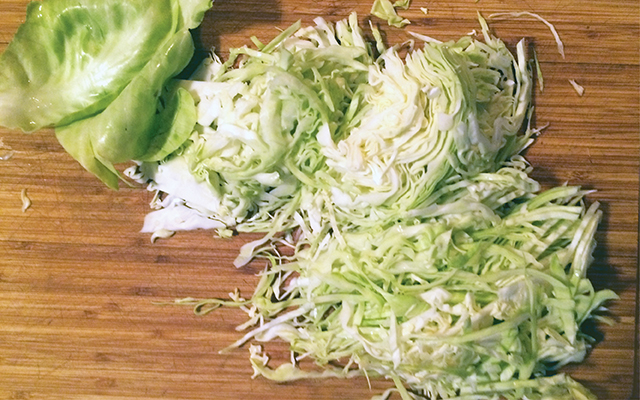
Shred or thinly slice the cabbage by hand or with a mandolin, keeping one to three healthy outer leaves of the cabbage.
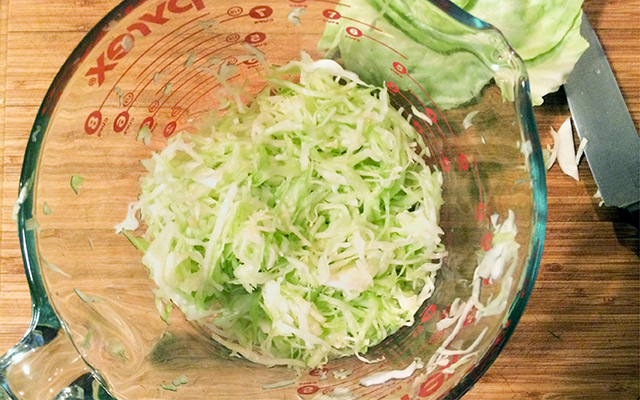
Combine the shredded cabbage with roughly 1 1/2 tablespoons of sea salt in a large bowl. Start to squeeze the mixture with clean hands (prevents introducing other unfavorable bacteria) until the cabbage has broken down and released its juices, about 5 to 8 minutes.
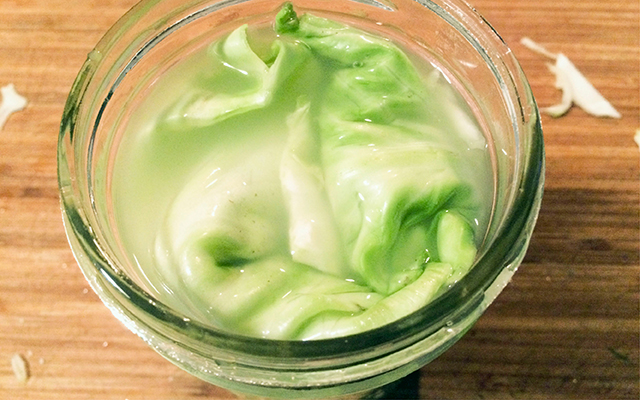
In a clean, room-temperature Mason jar, pack the mixture with all liquid into the jar with a non-reactive utensil or clean hands. Firmly press the mixture into the jar to submerge it in the brine. Use reserved outer leaves from the cabbage to hold it down by placing over the shredded mixture.

Set the jar on the counter away from direct sunlight. The fermentation process will take anywhere from three days to weeks depending on the temperature. Due to air exposure, mold or scum may appear on the top; skim it off immediately. As long as there’s no sign of mold farther down in the mixture, the rest of the immersed sauerkraut is fine. The good probiotic bacteria that you are creating during fermentation crowds out any other room for unfavorable bacteria (like mold) to grow.
There’s no hard rule for when sauerkraut is done. Sample it after three days, and taste your kraut every few days until you find your preferred level of tanginess.
Watch for bubbles and foam (as seen above) — that’s the fermentation creating probiotic bacteria. You may want to “burp” your jar daily by slowly opening the lid to release the gas buildup. Once you’ve reached your desired fermentation, discard the top leaves, reseal, and refrigerate.
Sauerkraut will stay good in your refrigerator for months — just remember to seal the lid tightly and return to the refrigerator promptly to prolong its lifespan.
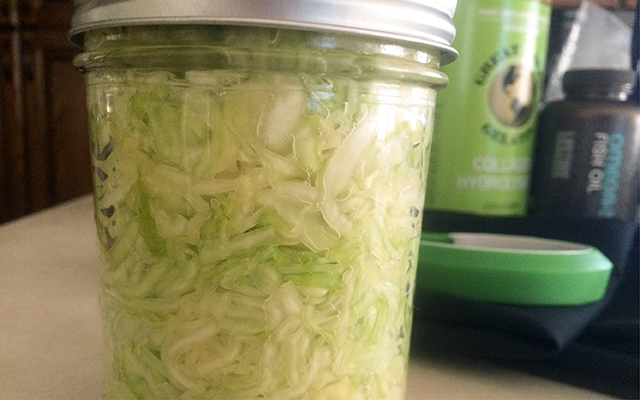

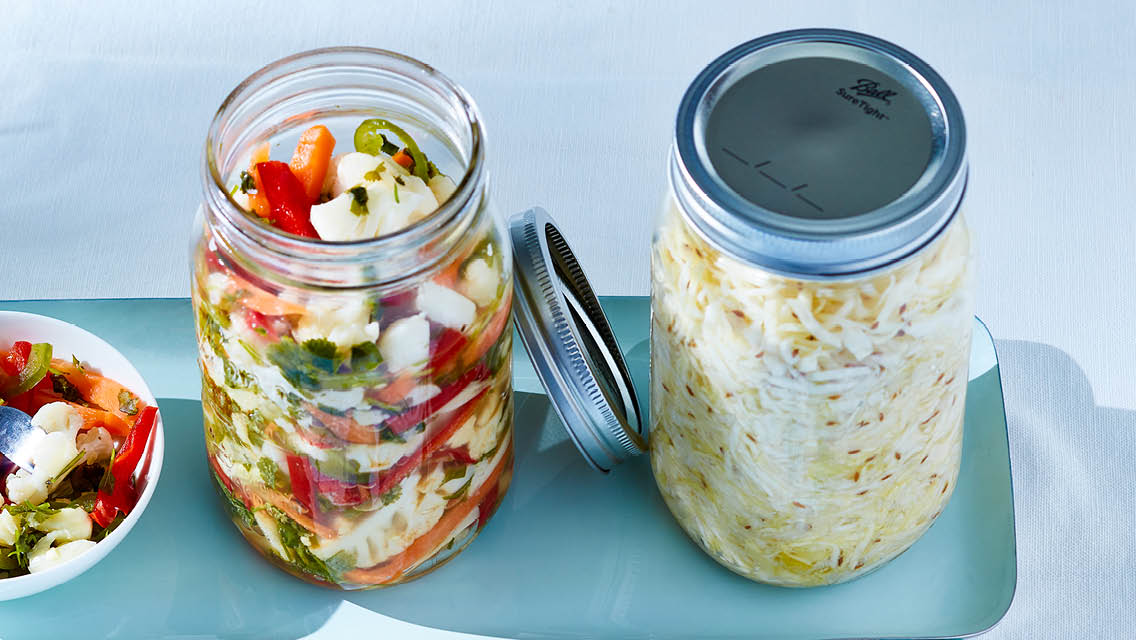

This Post Has 0 Comments